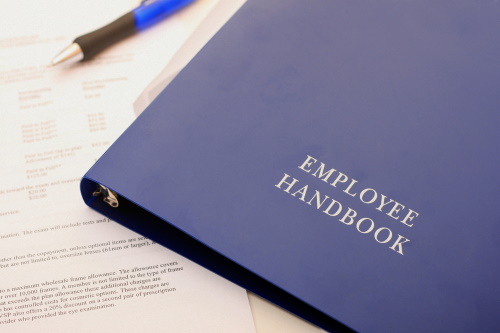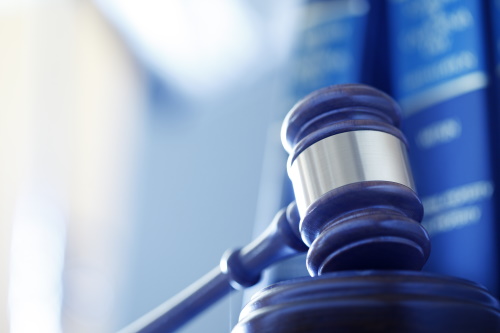For the most part, the general public has no idea how much training it takes and how much work is involved in safely and effectively flying a helicopter during a vehicle pursuit. Even law enforcement officers who haven’t been in a helicopter during a pursuit can’t fully appreciate the workload and crew co-ordination that occurs.
Most people associate the presence of a law enforcement helicopter with the apprehension of pursuit suspects, but a well-trained aircrew can do much more — they can make the pursuit safer for everyone. When tactical flight officers (TFOs) play an active role, they can significantly reduce the workload of ground units, who can then concentrate more on their driving and not worry about losing the suspect.
Even when a helicopter is overhead, officers must constantly balance the risks of continuing the pursuit with the likelihood of someone getting injured or killed. Unfortunately, the primary unit is sometimes the one least capable of objectively evaluating the situation.
During stressful situations, physiological changes take place, which cause fine motor skills to degrade, auditory and visual abilities to be impaired, and reaction time to increase by as much as 400 percent. As such, supervisors are tasked with monitoring the conduct of a pursuit and weighing several factors: their knowledge of the pursing officer’s experience and judgment; what the suspect is wanted for; the time of day and other environmental factors; the location and speed of the pursuit; the type of vehicle and how the pursuing officer sounds on the radio. How the officer sounds, is usually the best indication of how well the pursuit is going and how much stress he or she is feeling.
The Set-Up
There is a misconception that those same stresses on a primary unit don’t affect aircrews, yet, even after 20 years of flying these missions, when I’m en route to a pursuit I can feel my heart rate increasing and my adrenaline-level rising. I literally tell myself to relax, and I perform a mental checklist of the things I have to do.
As the pilot, I set my VHF radios up for the adjacent airspace, and arrive at the pursuit at a specific position and altitude. I tell the controller we’re involved in a pursuit and let them know the general direction it’s headed. By doing this, most controllers will give me as much leeway and preferential treatment as possible. Some really get into it and even co-ordinate handoffs with other towers (I make sure to thank them afterwards and tell them how the pursuit ended).
For TFOs, to have one less thing to do when they arrive overhead, they should turn on their video recorders before getting to the pursuit. Recording pursuits is the best method of gathering nearly irrefutable evidence. Videos also make excellent training resources and help ground units locate evidence suspects may have discarded. At night, TFOs should use forward-looking infrared (FLIR). Most vehicle-pursuits end in foot pursuits, and it’s much safer and more effective to conduct these at night with FLIR, rather than only a searchlight, because the aircraft can be flown significantly higher.
Finally, TFOs should ensure their radios are set up properly: many pursuits involve multiple jurisdictions, and aircrews are often the only ones who can communicate with other agencies. It’s more efficient to set up equipment while en route, rather than once you’re overhead.
Calling the Scene
One of the most important things a TFO can do during a pursuit is use a calm voice on the radio. A calm voice reassures everyone the pursuit is under control and the suspect isn’t going to get away. The rising pitch and volume in a TFO’s voice is a dead giveaway they’re on overload. If ground units sense the aircrew is losing sight of the suspect, they’re likely to drive faster to try and keep the suspect in sight: pilots should remind less-experienced TFOs to calm down if they see this happening.
Experienced ground units know that when the aircraft is overhead they can back off the suspect and let the TFO call the pursuit. It doesn’t mean they drop the pursuit completely (although that may be wise), it means they don’t have to be as close to the suspect — which is often all it takes to cause the suspect to slow down. TFOs may occasionally have to remind ground units of this, but in all cases aircrews should do what they can to reduce the workload of ground units and make the pursuit safer.
In some cases, TFOs may have to wrestle the radio away from a ground unit who has become too focused on keeping up with the suspect. If the officer won’t relinquish the airtime, and insists on being right on the suspect’s bumper, the TFO must take control and tactfully tell him or her to stay off the radio and concentrate on driving. This usually only happens with less experienced officers or officers from outside agencies who aren’t used to working with an aircraft.
It’s easy for a TFO to get wordy on the radio, too, but it usually isn’t necessary. There is some basic information TFOs should definitely be updating everyone on, including: the location of a pursuit; the suspect’s direction of travel and speed; traffic conditions; and anything unusual about the suspect’s actions.
Sometimes a TFO can get tunnel vision during a pursuit, just like ground units do. To avoid this, they should glance ahead of the pursuit, when practical, to provide information about upcoming traffic conditions such as whether the pursuit is headed for a school zone or if there’s a busy intersection ahead with cross traffic.
When it comes to relaying traffic conditions, though, TFOs should never tell ground units an intersection is clear. The information may be accurate for the primary unit, but probably won’t be for the second or third unit in the pursuit. Ground units must use due diligence, and driving through red lights at 60 miles an hour because the TFO said the intersection was clear is simply unsafe. The fact is TFOs can’t see everything: there may be buildings, billboards or other obstructions blocking their view of pedestrians and vehicles. If ground units fall behind because they slow down to drive safely through an intersection, that’s fine. A good practice for TFOs is to advise of known hazards, but never state there are no hazards.
Knowing the Area
What do TFOs do when they don’t know the names of the streets? Should they stop calling the pursuit and let ground units take over? Absolutely not! When TFOs stop providing assistance to ground units, the safety and tactical benefits of the helicopter are lost. Ground units will feel the need to drive faster to keep up with the suspect, and they’ll monopolize the radio traffic, making it difficult for the TFO to say something important.
GPS moving maps have significantly minimized the problems of not knowing the area, but haven’t eliminated them. Simply, if the TFO is unfamiliar with the streets, he or she should say so, and ask the primary unit to call out the name of the street the suspect is on, nothing more. If ground units have fallen behind and can’t see the suspect, the TFO’s job becomes harder, but not impossible — just as long as they don’t stop watching the suspect to search for officers. Meanwhile, they should use landmarks to direct units toward the suspect (or north, south, east, west compass points) until they’re back in familiar territory. TFOs can also tell ground units to key off the aircraft’s position, or the searchlight, if it’s being used. The pilot may be able to help if he or she is familiar with the area, but not at the expense of flying the aircraft safely.
Not knowing the area is often only a temporary problem, so the TFO should continue to provide the suspect’s direction of travel, speed, traffic conditions, etc. This lets everyone know the aircrew still has the suspect in sight and he’s not going to get away.
When suspects see that ground units have fallen behind, they often stop and flee on foot. The TFO won’t see this happen if he or she has stopped watching the suspect to search for officers. They must stay with the suspect. It may take a little longer to get ground units into position, but that’s acceptable if the suspect can be kept in sight.
Aircraft Positioning
How should the pilot position the helicopter during a pursuit? Maneuvering a helicopter around a fleeing suspect, who is constantly changing directions, and rapidly accelerating and decelerating, can be very challenging. Many vehicles are capable of accelerating and decelerating faster than a helicopter in level flight, so maintaining airspeed is crucial. In almost all cases, the pilot should position the aircraft so the suspect is on the TFO’s side of the aircraft; exactly where depends on how fast the suspect is going.
During a high-speed freeway pursuit, the suspect should be more in front of the aircraft than alongside it. This enables both crewmembers to see the suspect and the approaching environment. If the pilot positions the aircraft so the suspect is alongside, he or she will be constantly glancing back and forth between the suspect and the approaching environment to keep the aircraft in position. And if the suspect exits the freeway quickly, the pilot will have less time to react and the subsequent maneuver will be more drastic. It’s much easier to react to a suspect’s actions when the pilot has more time to maneuver, and positioning the aircraft behind the suspect gives us that time.
Under no circumstances should a pilot hover during a pursuit — even when the suspect is stopped or moving very slowly — as the flat attitude of the aircraft will make it more difficult for both crewmembers to see the vehicle, especially if it’s in close proximity to the aircraft. It is far more effective to make turns around the vehicle, in the TFO’s direction, to keep it in sight.
During a pursuit, the pilot’s workload can range from low to high, depending on several factors: altitude; weather; familiarity with the airspace; nearby aircraft; terrain and other obstructions; aircraft performance; and pilot/TFO team experience.
When it comes to altitude, less experienced pilots tend to descend and get too close to the suspect. Pilots must recognize and avoid this, because it’s very easy to get too involved and not pay enough attention to flying the aircraft. Barring unusual circumstances, pilots should maintain an appropriate and relatively constant altitude. Risk is commensurate with pilot workload, and during pursuits pilot workload increases as altitude decreases. As the aircraft descends, the relative changes in positioning between the vehicle and helicopter are more pronounced and occur faster, making it progressively more difficult for the pilot to maintain proper positioning.
When suspects turn left, it’s relatively simple to keep the aircraft positioned effectively by following them through the turn. (Note: if you have a left-hand pilot seat, the following discussion is reversed for you.) When suspects turn right, however, pilots should not make a right turn, else both crewmembers will likely lose sight of the suspect behind the instrument panel or airframe, and the vehicle will probably end up behind the aircraft when the pilot rolls out of the turn.
If the suspect makes a right turn and is moving perpendicular to the aircraft’s path, pilots should make a slight right turn to lead the suspect, then turn left around the suspect. Performed correctly, this maneuver keeps the suspect in the same relative position to the aircraft, and both crewmembers should be able to keep the vehicle in sight. It also enables the pilot to maintain good forward airspeed throughout the turn.
Vehicle pursuits can be challenging, but there are a number of things aircrews can do to enhance the safety of ground units and citizens, and increase the chances of apprehending suspects.



